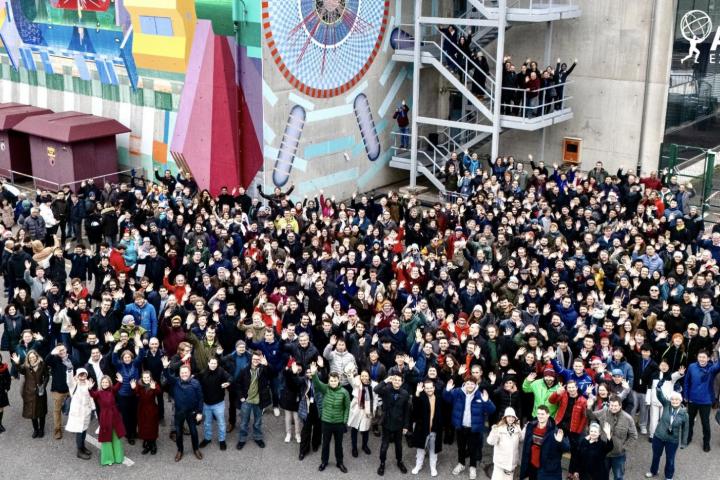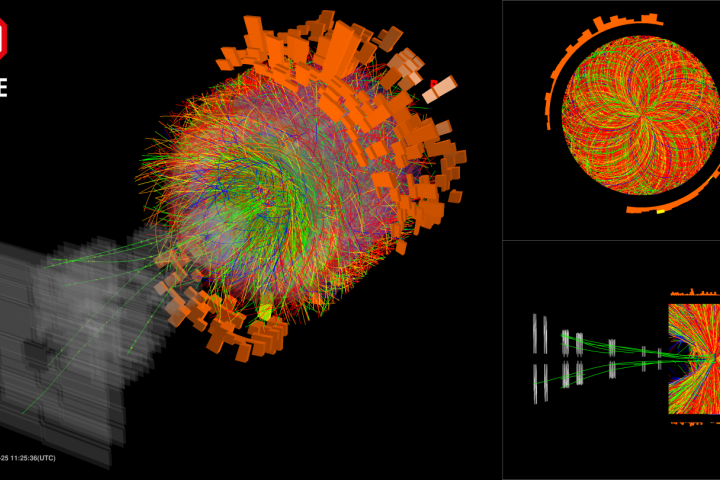
Representatives of the Breakthrough Prize Foundation awarded the prize to the ATLAS, CMS, ALICE and LHCb at the Large Hadron Collider (LHC) at CERN. The prestigious award will bring a total of three million US dollars to further the advancement of science.
"Our university has contributed to this success through the research teams involved in the ATLAS and ALICE experiments. We have been involved in both experiments from their inception, i.e. from the development of the detectors, through their installation and commissioning, to their operation - i.e. providing 24/7 shifts, calibrating and simulating their response - and subsequent physical analysis. The ATLAS experiment has published more than 400 scientific publications during the award period," says Dr. Zdeněk Hubáček from the Faculty of Nuclear Sciences and Physical Engineering at CTU (FNSPE), Team Leader of the ATLAS group at CTU.
The award shows that students and researchers from our university can become part of world-leading research. By participating in international projects such as CERN, they gain not only expertise, but also contacts and experience that will open doors to further scientific and professional development.
"Our team was involved in the design of an important part of the ALICE detector, namely the Muon Forward Tracker. The research group involved in the ALICE experiment is leading the study of quark-gluon plasmas and the use of photons to probe the structure of matter. Our researchers are involved in the development and innovation of detector technologies across several experiments at CERN and beyond, including their applications outside particle physics," says Prof. Guillermo Contreras from the CTU FNSPE, Team Leader of the ALICE group at CTU.
Millions of dollars for research into the cornerstones of our universe
100% of the prize money will go to the CERN & Society Foundation. These funds will finance scholarships for PhD students from member countries (the Czech Republic is one of them) who will have the opportunity to spend a research period at CERN.
The award of three million dollars is divided as follows: ATLAS ($1 million), CMS ($1 million), ALICE ($0.5 million) and LHCb ($0.5 million), in recognition of 13,508 co-authors of scientific publications based on data from the so-called Run-2 run of the LHC accelerator) published between 2015 and 15 July 2024.
"It may seem funny that we won the prize along with 13,500 other physicists, but it is important to remember that running such huge experiments requires the precisely coordinated collaboration of many thousands of people. It's not just the breakthrough physics analyses themselves that attract media attention - for me, this award recognises the hard work behind the scenes: from the shifts when the experiment is running, to the simulations and data reconstructions, to the work of the technical groups on quality control, algorithm refinement and much more," says Kamil Augsten from CTU FNSPE, a member of the ATLAS team at CTU.
Scientists have won the prestigious "Scientific Oscars" for testing the modern theory of particle physics - the so-called Standard Model - and other theories that describe physical phenomena beyond it. This includes precise measurements of the properties of the Higgs boson and elucidating the mechanism by which the Higgs field confers mass on elementary particles; exploring the extremely rare particle interactions and exotic states of matter that existed in the first moments of the universe; discovering more than 72 new hadrons and measuring the subtle differences between matter and antimatter particles; and setting strong constraints on the possibilities for new physics beyond the Standard Model, including dark matter, supersymmetry and hidden extra dimensions.
About each experiment:
ATLAS and CMS are versatile experiments that implement the entire research programme enabled by the LHC's high-energy and high-intensity proton and ion beams. In 2012, they jointly announced the discovery of the Higgs boson and are still investigating its properties.
ALICE explores quark-gluon plasmas - a state of extremely hot and dense matter that existed during the first microseconds after the Big Bang - as well as photoproduction processes, where light is used to probe the structure of matter at its most fundamental level.
The LHCb is concerned with the subtle differences between matter and antimatter, fundamental symmetry breaking and the complex spectra of composite particles (hadrons) consisting of heavy and light quarks.
--
Title photo - Scientists from the ATLAS team
Lower - Visualisation of a collision at the ALICE detector
2x photo by CERN
